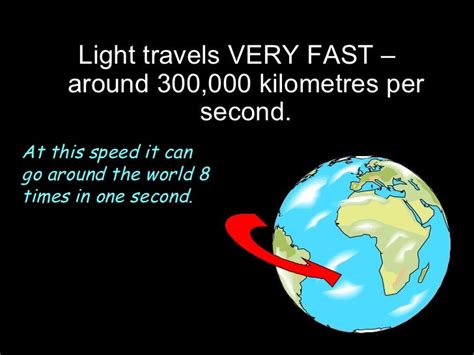Traveling
Light Travels Fastest

Introduction to the Speed of Light
The speed of light is a fundamental constant in physics, representing the fastest speed at which any object or information can travel in a vacuum. This speed is approximately 299,792,458 meters per second and is denoted by the letter c. The significance of the speed of light extends beyond its numerical value, as it plays a crucial role in our understanding of space, time, and the behavior of particles at high energies.
Understanding the Concept of Speed
To comprehend why light travels the fastest, it’s essential to understand what speed means in the context of physics. Speed refers to how fast an object moves, typically measured in distance per unit time (e.g., meters per second). In the universe, there are various speeds at which different objects and particles can travel, ranging from the slow movement of planets around their stars to the incredibly high speeds of particles in accelerators.
The Theory of Special Relativity
One of the key principles that explain why light travels at the fastest possible speed is Albert Einstein’s Theory of Special Relativity. Introduced in 1905, this theory posits that the laws of physics are the same for all observers in uniform motion relative to one another. A cornerstone of this theory is that the speed of light in a vacuum is always constant and unchanging for all observers, regardless of their relative motion. This principle led to a fundamental shift in understanding space and time, introducing the concept of spacetime as a unified, four-dimensional fabric.
Implications of the Speed of Light
The speed of light has several implications for our understanding of the universe: - Limit on Object Speeds: No object with mass can reach the speed of light. As an object approaches the speed of light, its mass increases, and the energy required to accelerate it further becomes infinite. This sets a universal speed limit. - Time Dilation and Length Contraction: As objects approach the speed of light, time appears to pass more slowly for them relative to stationary observers (time dilation), and they appear shorter (length contraction). - Energy and Mass Equivalence: The famous equation E=mc^2 shows that mass and energy are equivalent and can be converted into each other, with the speed of light squared being the conversion factor.
Experimental Evidence
Numerous experiments have confirmed the constancy of the speed of light. One of the earliest and most significant experiments was performed by Michelson and Morley in 1887. They attempted to measure the speed of light in different directions, expecting to detect variations due to the Earth’s motion through a hypothetical medium called the “ether.” However, their experiment showed no such variation, supporting the idea that the speed of light is constant and independent of the motion of the observer.
Applications and Impact
The understanding that light travels at the fastest possible speed has far-reaching implications in various fields: - Telecommunications: The speed of light limits the maximum rate at which information can be transmitted. - Space Exploration: The vast distances between stars and galaxies mean that even at the speed of light, it would take years to travel between them, making interstellar travel a significant challenge. - Particle Physics: Particle accelerators operate by accelerating charged particles to nearly the speed of light to study high-energy interactions.
💡 Note: The speed of light in a vacuum is a universal constant, but light can travel slower in materials due to interactions with the material's particles.
Conclusion and Future Directions
In summary, the speed of light is a fundamental constant of the universe, setting the maximum speed limit for any object or information. This concept has been extensively tested and confirmed through various experiments and observations. As we continue to explore the universe and push the boundaries of technology, understanding the speed of light and its implications remains crucial. Future research in physics, especially in quantum mechanics and cosmology, will further illuminate the role of light speed in the universe’s grand scheme.
What is the speed of light in a vacuum?
+
The speed of light in a vacuum is approximately 299,792,458 meters per second.
Can any object reach the speed of light?
+
No, according to the theory of special relativity, no object with mass can reach the speed of light.
What are the implications of the speed of light for space travel?
+
The speed of light sets a significant challenge for space travel, as even at high speeds, it would take many years to travel between stars and galaxies.